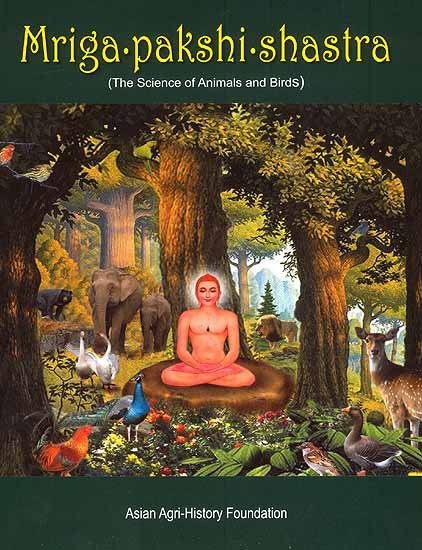Animal Kingdom (Tiryak) in Epics
by Saranya P.S | 2019 | 51,616 words | ISBN-10: 8190396315 | ISBN-13: 9788190396318
An English study the Animal Kingdom (Tiryak) in Epics.—The present thesis is based entirely on Ramayana and Mahabharata although an attempt is made to analytically compare the Animal kingdom with Mriga-pakshi-shastra—‘The ancient Indian science of of Animals and Birds’....
Chapter 1.10 - Myths in different literary genres
Many literary genres like fables, tales, folktales, sagas, epics, legends, etc. are related to myths in various ways. Parables differ from myths in their purpose and character. None of these literary genres has an exact and precise definition.
FABLE: The term Fable derives from the Latin word ‘fabula’ which means the same as the Greek ‘mythos’. It came to mean an untrue story. Like some of the myths, fables consisted of the features of personification of animals or natural objects as characters. Fables always have a moral message. They are instructive tales that teach morals about human social behaviour.
FAIRY TALES: These are stories about the supernatural and often show activities of malevolent beings. The term is widely used to refer to a wider class of narrative stories. These stories often contain a young individual who constantly confronts strange or magical events. In European countries these types of stories were more popular prior to the 18th century.
FOLK TALES: Sometimes a myth is considered a folktale and a folktale as a myth. Myths meant stories with some veiled meanings. Sometimes they are like fabulous stories. Folktales were developed over long periods of human history.9
SAGAS: Sagas are stories mostly about ancient Nordic and Germanic history,early Viking voyages,the b attles that took place during the voyages, and migration to Iceland and of feuds between Icelandic families. They were written in the Old Norse language, mainly in Iceland. The texts are tales in prose which share some similarities with the epic, often with stanzas or whole poems in alliterative verse embedded in the text, of heroic deeds of days long gone,"tales of worthy men," who were often Vikings, some-times pagan, sometimes Christian. The tales are usually realistic, except legendary sagas, sagas of saints, sagas of bishops and translated or recomposed romances. They are sometimes romanticised and fantastic.
EPICS: Traditionally, epics are lengthy narrative poems describing heroic deeds and events. Thus Homer’s Iliad and Odyssey, Valmiki’s Ramayana and Vyasa’s Mahabharata are epics. John Milton’s Paradise Lost, Paradise Regained and Samson Agonistes are also epics, when considered in this way. In all these we find heroic deeds of great men and great events.
LEGEND: A legend is a genre of folklore that consists of a narrative featuring human actions perceived both by teller and listeners to take place within human history. Narratives in this genre may demonstrate human values, and which possesses certain qualities that give the tale verisimilitude. Legend, for its active and passive participants, includes no happenings that are outside the realm of "possibility," but may include miracles. Legends may be transformed over time, in order to keep them fresh and vital, and realistic. Many legends operate within the realm of uncertainty, never being entirely believed by the participants, but also never being resolutely doubted. A modern folklorist's professional definition of legend was proposed by Timothy R. Tangherlini in 1990: Legend, typically, is a short (mono-) episodic, traditional, highly eco-typified historicized narrative performed in a conversational mode, reflecting on a psychological level a symbolic representation of folk belief and collective experiences and serving as a reaffirmation of commonly held values of the group to whose tradition it belongs.
Every myth has a social base of import sublimated by attributing to it a divine and mythical character. The artist who tries to communicate a myth assumes that it grows from a life sequence to an exaggerated and idealized concept. Similarly the implements including colour, sound, shape, etc. which constitute a myth also assume dimensions bigger than life. People’s approach towards myths and mythology is of a creative nature. Their spirit is always cherished in their memory, their inspiration moulds their life.
